- Home
- Indoor Pests
- Get Rid of House Centipedes
Get Rid Of House Centipedes
This post may contain affiliate links so I earn a commission.
If you are looking to get rid of house centipedes you have seen crawling on your floors, walls or ceilings inside your home, the first question you should ask yourself is whether or not you actually need to get rid of them?
These creepy multi-legged creatures can be startling when they are caught slithering through your home, but are they dangerous?
Knowing what centipedes are, why they are in your home, and if they can harm you or your property will help you decide if you need to remove them and if so, how.
What Are House Centipedes?
House centipedes (scutigera coleoptrata) are hideous looking arthropods that can live from three to seven years feeding on small insects such as flies, termites, spiders, silverfish and cockroaches.
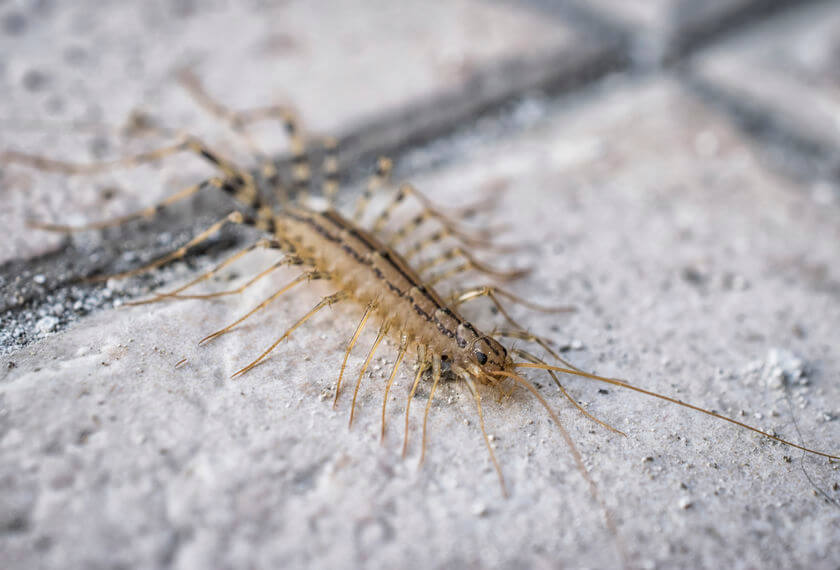
They are long creatures with worm-like bodies that are typically grayish yellow with stripes or darker markings.
Adult house centipedes have 15 pairs of legs and they retain those 15 pairs for 3 or more stages of molting.
When in danger, house centipedes can actually detach their legs to help them get away from predators or other harmful things.
Typically living outside in dark, damp areas like under leaves, inside tree bark, or within mulch around your home, centipedes need very little space to get inside your home while seeking out their next insect meal.
Centipedes are mostly nocturnal, but you can find them out foraging for food during the day, as well.
Get Rid Of House Centipedes - Are They Harmful?
If looks could kill, house centipedes would be deadly dangerous.
They are very creepy looking, there is no getting around that.
Spotting one of these long slithering creatures scooting across your floor or wall can cause a visceral reaction to kill the thing on the spot and try to forget you ever saw it.
But are they actually a danger to you or your home?
The quick answer is “no.”
House centipedes generally pose no immediate threat to you or your family.
They are passive, skittish, anti-social arthropods that have no interest or use in humans or their pets.
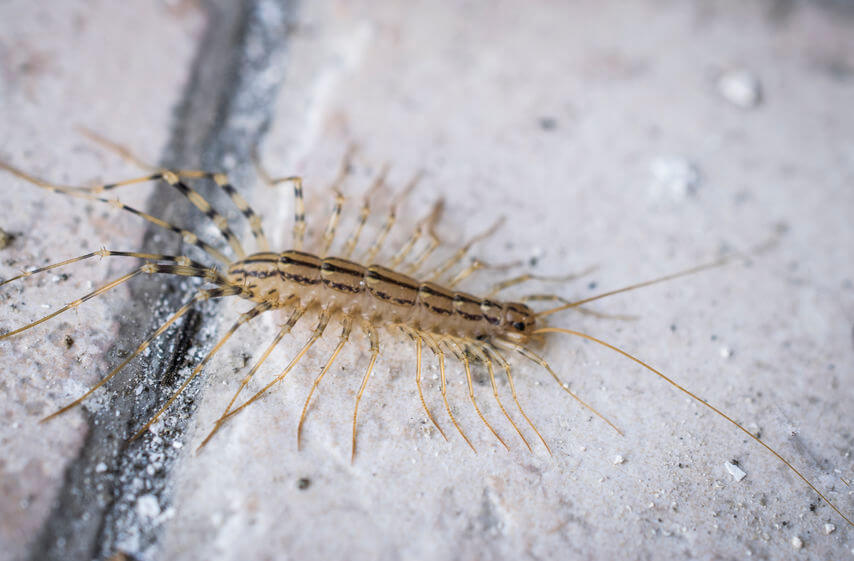
While house centipedes can bite or sting if they are provoked or become fearful, outside of an allergic reaction in some people, their sting is basically harmless.
House centipede stings (which is administered with venom through forcipules) can be painful causing swelling and pain similar to a bee sting, but pose no long-term non-allergic threat.
Centipedes do not carry or transmit diseases like other house bugs and insects.
In fact, they feed on the kinds of insects that can be harmful to your family, acting as a natural form of pest control for your house.
Get Rid Of House Centipedes - What Attracts Them Into Your Home?
When discussing the best method to get rid of house centipedes it is important to understand why and how they get into your home in the first place.
In the moment it may seem like the house centipede’s main reason for existence is to scare the living daylights out of you.
They actually want to see you even less than you want to see them.
House centipedes are predators, but they don’t prey on humans.
The only reason house centipedes enter your home is to look for food and water.
If you reduce the amount of other pests and bugs around your home, you will decrease the presence of house centipedes looking to feed on them.
If they are inside, your home has what they are looking for including:
Moisture
House centipedes will not survive long at all without water or moisture.
A dehumidifier is a great tool for controlling the amount of moisture in your home, especially your basement.
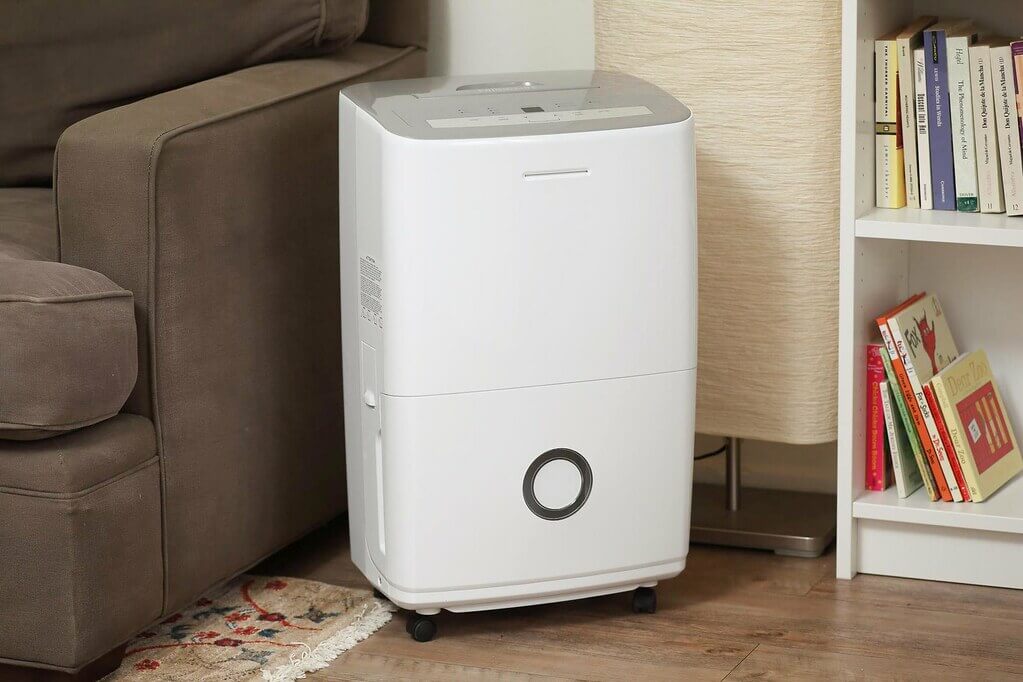
Any damp areas where moisture collects presents ideal living conditions for house centipedes and they will seek those areas out in your basement, crawl spaces, or other dark, moist areas, including:
Leaky water spigots and hoses outside your home which attracts house centipedes and provides entryways into the house.
Broken, clogged, or leaky gutters can create pockets of pooled water and damp conditions on your exterior walls.
Rainwater that sits in shaded or heavy foliage can be especially inviting to moisture pests like house centipedes.
Food
It is not the goal of centipedes to become house centipedes by letting themselves into your home.
They are looking for food, and not the Twinkies and Pop Tarts in your pantry.
Centipedes feed on soft-bodied insects and arthropods.
Some exterior conditions that have the potential to draw house centipedes near or into your home include:
The bugs that house centipedes eat are drawn to plants and garden vegetation outside your home.
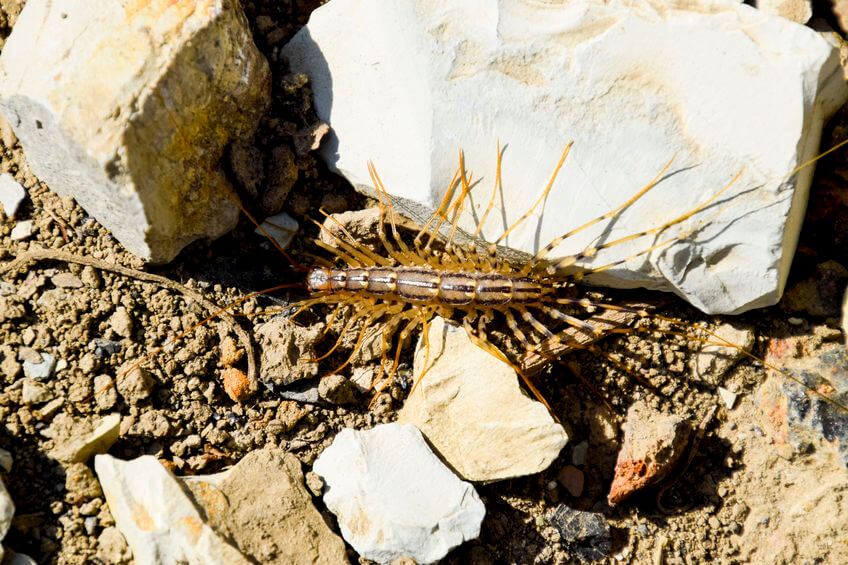
Flip over a rock or other hardscaping materials in your yard and you will find a feast of insects and critters that centipedes feed on.
Improperly discarded or disposed of trash attracts flies, spiders, and other inviting house centipede food products.
Exterior lights also draw the kind of pests house centipedes eat.
Safe Harbor
Pests often approach the outside of your home and enter looking for harborage.
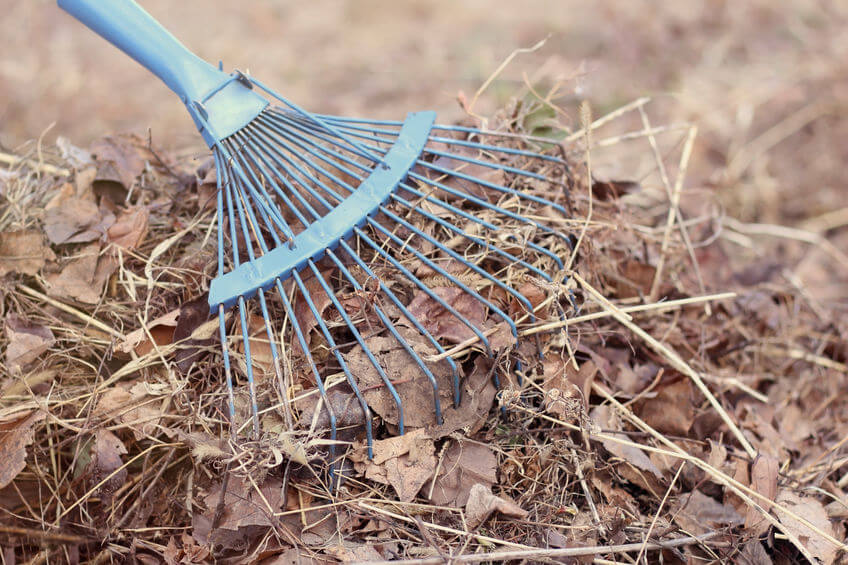
Examples of the comfortable living spaces your home may provide for house centipedes and the bugs they eat include:
- Woodpiles
- Construction materials and tools
- Toys left outside
- Leaf piles and litter left on your lawn
- Weed and tall overgrowth
How To Get Rid Of House Centipedes
The best way to get rid of house centipedes is to create an environment inside and outside your home they cannot or will not want to come in.
They are generally not harmful outside of the stress and shock of seeing one crawling near.
They help themselves to other nasty bugs and pests that actually can cause a hazard to you, your family, your pets, and your house.

Centipedes don’t travel or live in packs like other household pests.
If you see one cockroach scurry under the refrigerator when you go for a glass of milk in the middle in the night, you know there are many more in the vicinity.
That is not so with house centipedes.
They are not social animals and seeing one in your house does not mean there are more waiting in a nest in your basement.
A few simple, common sense preventative measures should be able to keep house centipedes away.
Keeping the interior and exterior of your house clean and dry will go a long way to preventing or getting rid of house centipedes.
Keep It Clean
Stacked boxes on the floor of your damp basement will attract house centipedes and other pests centipedes feed on.
Keeping your basement, cellar, crawl spaces, attics, and other dark, damp areas clean and orderly will create environments unsuitable for house centipedes to live.
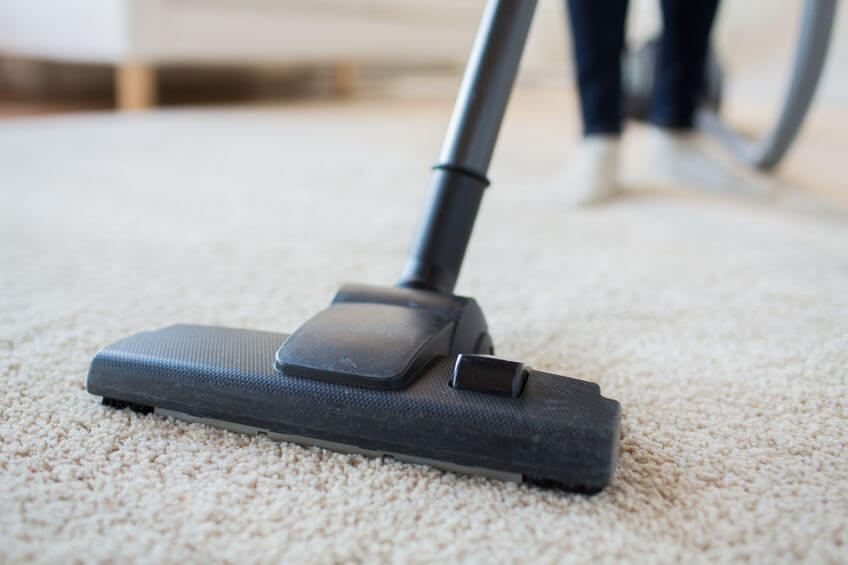
Outdoor areas are especially vulnerable to attracting centipedes that could wind up in your home.
Piles of wood exposed to the elements, loose grass and leaves, and other water-retaining debris are ideal for centipedes looking for moisture and a food source.
Keeping firewood piles and compost away from the foundation of your home and elevating stored boxes and other items from the floor of your basement or crawl space will help reduce the attraction to house centipedes.
Keep It Dry
House centipedes seek out cool, damp, dark spaces.
Reducing those conditions in the far corners of your home will help to keep your house centipede population at bay.
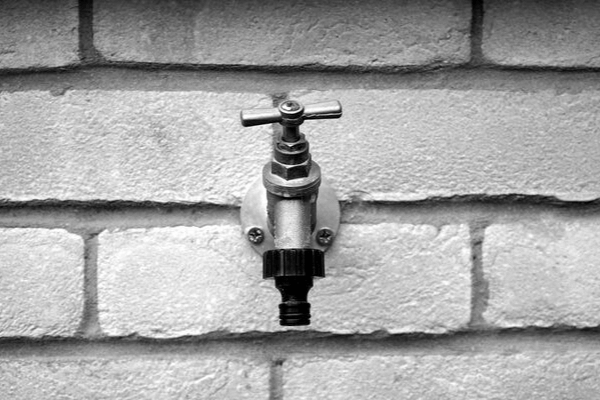
Using a dehumidifier will help to dry out the basement or other moisture-rich areas of your house.
Also, be diligent about fixing any leaks or other plumbing issues that create unwanted moisture.
Seal It Up
House centipedes are very thin, fast-moving arthropods that can get through the tiniest spaces and are able to crawl vertically up walls and other surfaces.
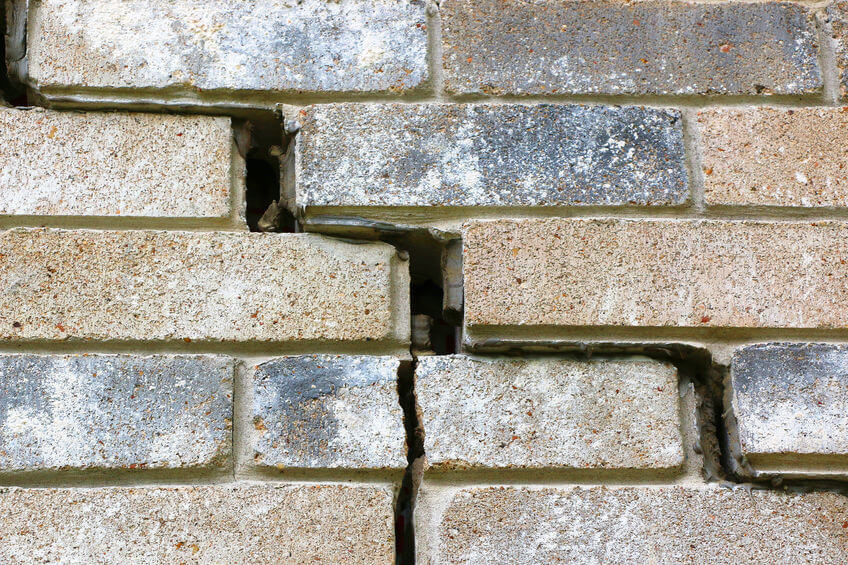
Areas in your home where the tiniest spaces can provide an entry point into your home for centipedes include:
- Door sweeps
- Ductwork
- Piping systems
- Screens
- Under your deck, porch, patio, or exterior stairwell
- Weather stripping
- Window and door frames
Identifying and sealing up especially vulnerable areas can help prevent house centipedes from getting inside.
Using Pesticides To Get Rid Of House Centipedes
The initial reaction to seeing a pest inside your home is to kill it and go searching for the others.
That reaction is especially common when spotting something as creepy looking as a house centipede crawling up the wall of your living room.
The easiest thing to do to get rid of house centipedes is to grab a wad of tissue, squash it and send it down a flushed toilet.

That method will get rid of the centipede, but it will also prevent the centipede from eating other potentially hazardous bugs in your home.
Instead of crushing one with a tissue, try placing the discovered creature in a cup or jar and release it outside.
This will allow it to live another day to eat truly harmful pests before they get inside.
Commercial pesticides will also kill house centipedes and professional pest control companies will spray for them, but considering how little harm they cause and the benefits they bring, it just doesn't seem necessary to get rid of house centipedes with dangerous chemicals.
Get Rid Of House Centipedes - Overall
If you see a centipede scurry across your floor, just catch it in a jar or cup and release it outside.
Then, implement some of the steps listed above and you'll not only get rid of house centipedes, you'll help prevent and/or remove a lot of other unwanted pests and insects from your home in the process.



